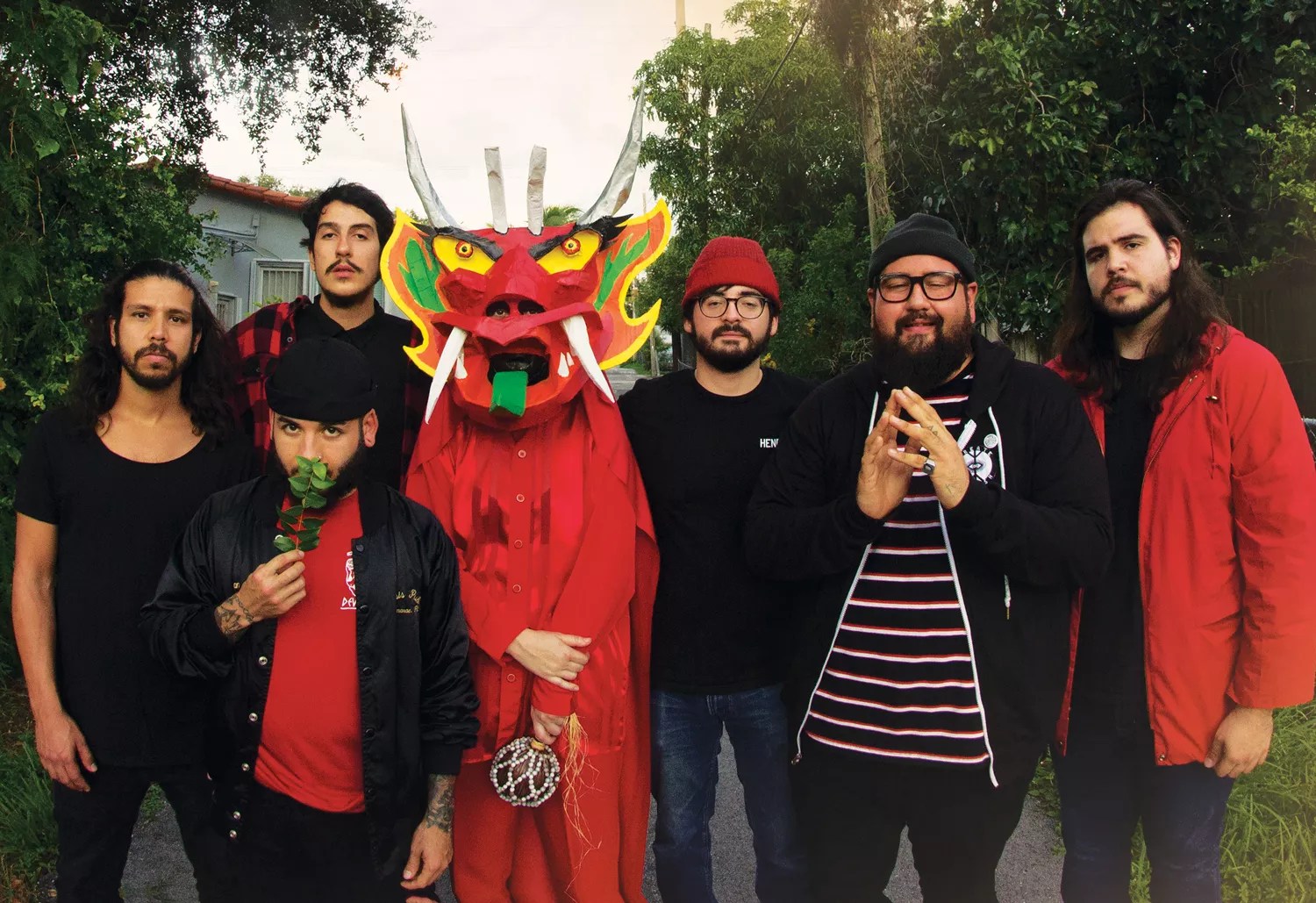
Courtesy of the band

Audio By Carbonatix
The Venezuela-born postrock outfit Zeta left its native country nearly ten years ago. But in the group’s latest single and accompanying video, the Miami transplants have gone back to their roots.
The newly released “Los Altos de Santa Fe,” the second single from the band’s latest album, Mochima, is a sonic homage to its members’ homeland. In it, the sextet’s nomadic sensibilities – the band has spent much of the past ten years on the road – and deep ties to Venezuela seep through to produce a unique sound that draws on everything from hardcore punk to Afro-Carribean rhythms.
Since arriving in South Florida four years ago, Zeta has felt a growing impulse to explore what it means to be Venezuelan. Though the band’s previous release, Magia Infinita, dealt with the years of migration experienced by the musicians, its newest work is the first to interrogate the members’ Venezuelan identity directly.
“It’s the first time that we explored our experience in Venezuela, not necessarily from a political perspective, which was our main focus before. This was more about the origin stories of Venezuela. Where do we come from?” explains singer, guitarist, and founding member Juanchi.
The band comprises Juan Ricardo Yilo (Juanchi), Daniel Hernandez Saud, Gabriel Duque, Fransisco Lujan, Eduardo Sandoval, and Antonio Pereira. Since they met at the age of 12, Saud and Juanchi have been practically inseparable; they formed the first iteration of Zeta in 2003.
“From my perspective, we’ve been immigrants for so long, and so far away from home… you find yourself missing and drawn to all the feelings and colors and smells that are from your home,” Saud, a multi-instrumentalist and songwriter, explains. “We wanted to use this album as a vehicle to show all of these beautiful places and their traditions.”

Zeta
Photo by Paola Baltazar
“Los Altos de Santa Fe” is named for a town on the coast of the Gulf of Cariaco in the mountains of Mochima National Park – the site of an indigenous uprising against colonization. Inspired by this powerful history, Zeta zeroed in on Los Altos’ connection to indigenous land routes and key heroes of the Venezuelan independence movement.
“It’s been very cool to use all of these references to define our identity,” Juanchi says. “We’re describing a place that is so familiar to us, yet now we are away, [so] it’s even more important to rebuild and say through the music: ‘This is who we are. This is what we bring with us.'”
As Venezuela’s economic conditions grew increasingly grim through hyperinflation, food shortages, and rising mortality rates, the bandmates turned to their music as a means of escape, both literally and metaphorically. Embarking on a lengthy tour across Latin America, they found refuge in their performances and the music communities that embraced them. “We were traveling and trying to find a way to survive through playing, so we were staying in each country for the legal limit of time we could,” Saud explains.
Zeta reached South Florida four years ago – and fell in love. From their new base, they toured the United States extensively: In 2018, they played a staggering 250 shows. They built a community of musicians on the road and created deep ties to the DIY music scenes across the nation. “We really made the decision to try and stay here [in Miami] because even though this [U.S.] administration is not the most immigrant-friendly, we felt very safe to be ourselves here. Miami has a huge mixture of cultures and we felt safe,” Juanchi says of their decision to plant roots in the Magic City.
Though they had been influenced by a variety of music subgenres and styles, from shoegaze to hardcore and from Deftones to Blink-182, it wasn’t until they left Venezuela when they began making use of traditional instrumentation in their work. “When we were young,” Juanchi admits, “we just wanted to be as different as possible and scream and do noisy shit. But then we understood when we came here that we are this unique mix of stuff, you know? When we include the hand drum, it makes you travel to these places.”
The video accompanying the new single was filmed predominantly in Hialeah and directed by Ramon Brito, AKA Garabatoarte, a renowned Venezuelan artist who has worked on productions with Bad Bunny and Farruko.
The music video conjures fever dream-like images of two cultures colliding. As a child’s voice narrates in the intro, the devilish figure depicted throughout (the result of a handcrafted costume Saud constructed) represents the Dancing Devils of Yare. Though not strictly from the region of Los Altos de Santa Fe, the Dancing Devils of Yare are a folkloric 18th-century Venezuelan tradition representing the victory of good over evil.
Describing the concept for the music video, director Garabatoarte explains he was inspired by the band’s unique style, which is informed by its not-so-unique circumstances: “They’re Venezuelans looking in from the outside, struggling with immigration woes just like thousands of others, as well as myself. Perhaps to a certain (comical) extent, I viewed the Devil as an undocumented immigrant in another country. So the Devil is in that sort of situation of being alone on the beach, not knowing where he is. He’s not from that beach. He can’t find himself; he runs, jumps, searches for things until he finds music.”
The bandmates have returned to Venezuela on occasion, but they face serious consequences if they leave the States while their immigration status is unsure. In the meantime, their music has tethered them to both of their homes. Explaining his inspiration behind the song and video, Saud says, “Identity is sound, colors, textures, food.”